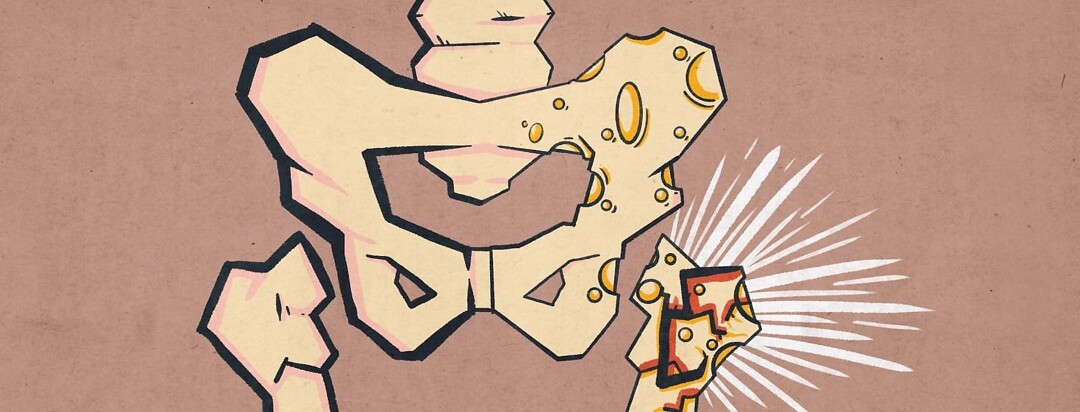Osteoporosis Woes with Rheumatoid Arthritis and My New Mantra
A few months ago, my ability to put my head in the sand about my osteoporosis came to a grinding halt. I fell and broke my hip in a classic osteoporotic fracture.
Osteoporotic fractures in my hip
Until then, when my doctors told me that I needed to treat my bones, I started closing my ears. I just didn’t want to deal with it - stubbornly thinking that taking calcium and walking every day would be enough to keep my bones relatively healthy.
I finally relented and started taking bisphosphonates last year, but this didn’t prevent me from fracturing my hip after a fall.
So here I am, finally facing the facts. And the facts are that people with rheumatoid arthritis (RA) have higher rates of osteoporosis and osteoporotic fractures occur at twice the rate compared to people without RA. Chronic inflammation, use of steroids, and immobility all contribute to this.1,2
Ways to improve bone health
Sometimes the truth catches up to you. Now that it’s caught up to me, I’m making a few changes to my life.
In addition to taking a new medication for my osteoporosis - one that builds bone much more aggressively than the bisphosphonate I did take - I’m also being diligent about taking calcium and vitamin D as well as eating foods high in those things every day.
I’ve never been a smoker. But if I was, it would be time to quit. I also know that too much alcohol consumption isn’t great for bones, so I only partake on rare occasions.
Because I’m doing physical therapy (PT) for the hip, I have a few exercises using leg weights that I will keep doing after I stop my course of PT, and the daily walks are more important now than ever because weight-bearing activities really help to keep bones strong.
Common risk factors for osteoporosis
Osteoporosis doesn’t hurt, so it’s easy to let it fall by the wayside. But given my recent experience, I think having a conversation about your individual risk factors with your doctor is never a bad idea.
Even if osteoporosis isn’t an issue for you now, you can prepare for your options in the future. Besides rheumatoid arthritis, other common risk factors for osteoporosis are:3
- Low body weight
- Being post-menopausal in women
- Cigarette smoking and alcohol consumption
- A sedentary lifestyle
- How active you were in adolescence.
Doing everything that I can
Some of these things we can change, and some we just have to live with. It’s always important to set up your house to be as safe as possible to decrease your chances of falling and to use a walking aid if you need to when you are out and about.
For me, I’m realizing that if I do everything I can, including taking the medication I’ve been so reluctant to agree to, I have the chance for a longer, stronger life. So, my new motto when I feel overwhelmed is just that - a longer, stronger life sounds good to me!
Community Poll
What are your plans for Arthritis Awareness Month? (select all that apply)

Join the conversation